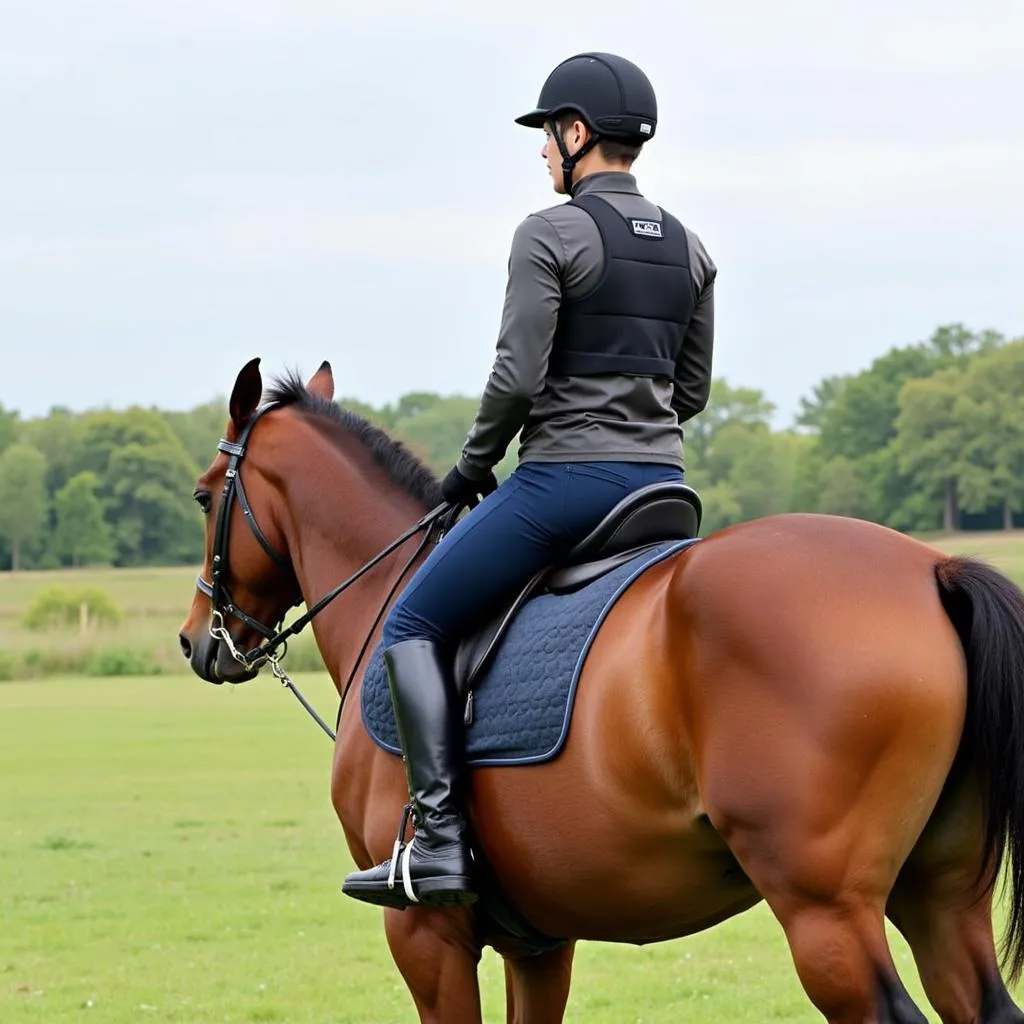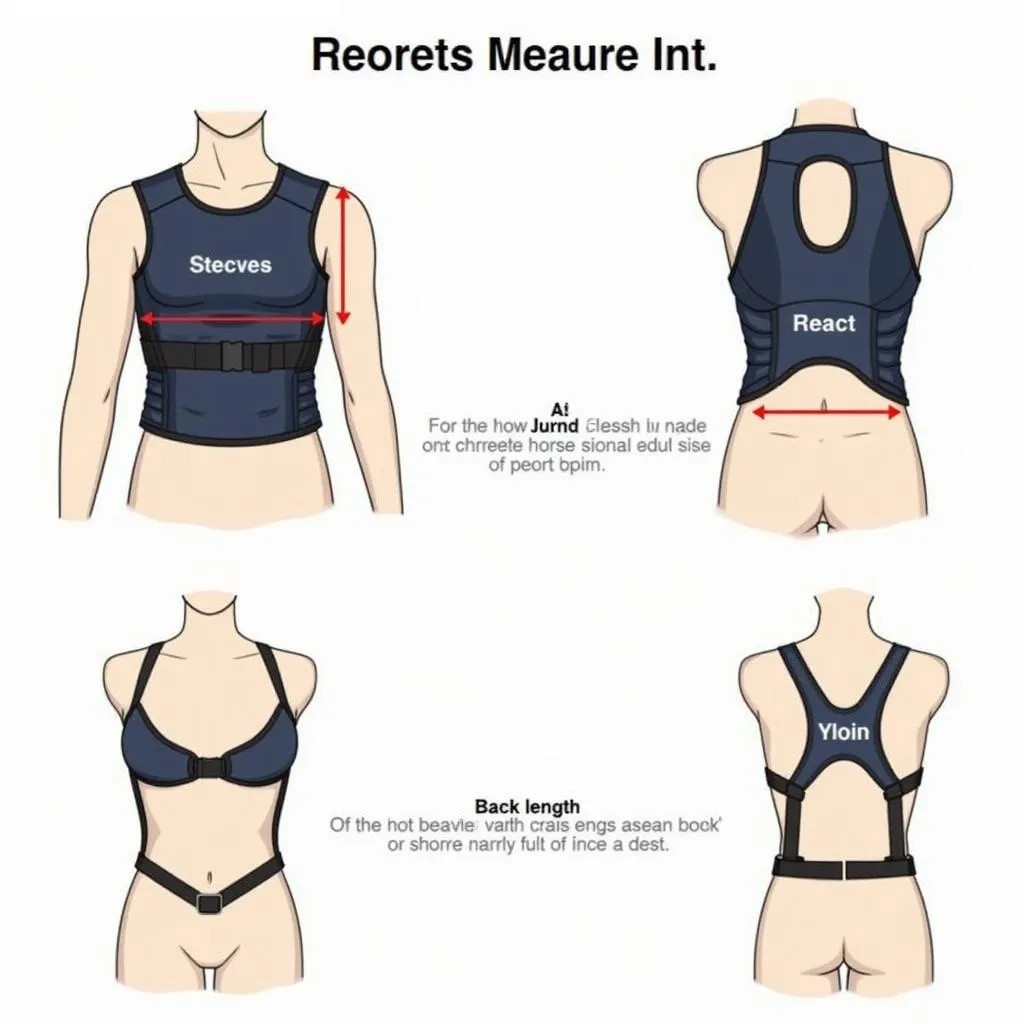Body protectors are becoming an increasingly common sight in horse riding arenas and trails around the world. This essential piece of safety equipment offers riders of all levels valuable protection against impact injuries in case of a fall or accident. Whether you’re a seasoned competitor or a leisurely trail rider, understanding the importance of body protectors, knowing how to choose the right one, and wearing it correctly can make all the difference in your riding experience.
Why Choose a Body Protector for Horse Riding?
 Horse Rider Wearing a Body Protector
Horse Rider Wearing a Body Protector
Horse riding, while an exhilarating and rewarding activity, inherently comes with risks. Even the most experienced riders can experience unexpected falls. A body protector acts as a crucial buffer between you and the ground or any obstacles, absorbing and distributing the force of impact. This can significantly reduce the severity of injuries, protecting vital organs and bones.
 Impact of a Fall with a Body Protector
Impact of a Fall with a Body Protector
Types of Body Protectors
Choosing the right type of body protector is essential for both safety and comfort. There are two main types available:
1. BETA Level Certified Body Protectors
These protectors meet the safety standards set by the British Equestrian Trade Association (BETA). They undergo rigorous testing to ensure they provide adequate protection for various riding disciplines. BETA Level 3 offers the highest level of protection and is suitable for high-risk activities such as cross-country riding and eventing.
2. ASTM Certified Body Protectors
The American Society for Testing and Materials (ASTM) also sets safety standards for equestrian body protectors. Similar to BETA, ASTM certified protectors undergo stringent testing procedures to ensure their effectiveness in absorbing and distributing impact.
Finding the Perfect Fit
 Measuring for a Horse Riding Body Protector
Measuring for a Horse Riding Body Protector
A well-fitting body protector is crucial for maximizing its protective capabilities. When trying on a protector, consider the following:
- Snug Fit: The protector should fit snugly against your body without restricting movement.
- Coverage: Ensure the protector covers your chest, back, and ribs adequately.
- Comfort: Choose a protector that feels comfortable and doesn’t hinder your riding position.
- Adjustability: Opt for a protector with adjustable straps to customize the fit.
Caring for Your Body Protector
Proper care ensures your body protector continues to provide optimal protection.
- Cleaning: Follow the manufacturer’s cleaning instructions carefully.
- Storage: Store your protector in a cool, dry place away from direct sunlight or heat sources.
- Inspection: Regularly inspect your protector for any signs of damage, such as cracks, tears, or loose straps. Replace if necessary.
Conclusion
Investing in a high-quality body protector is an investment in your safety and well-being as a horse rider. By understanding the importance of this essential piece of equipment, choosing the right type and fit, and caring for it properly, you can enjoy your riding experience with enhanced confidence and peace of mind. Remember, wearing a body protector is a sign of responsibility and a testament to your commitment to safe and enjoyable riding.
FAQs
-
Do I need a body protector even if I’m a beginner rider?
Yes, even beginner riders can benefit from wearing a body protector. It’s always best to prioritize safety from the start. -
Can I wear my body protector for other equestrian activities?
Some body protectors are designed for specific disciplines. Check the manufacturer’s recommendations. -
How often should I replace my body protector?
It’s generally recommended to replace your body protector every 3-5 years or sooner if it’s been involved in a significant impact. -
What should I do if my body protector gets wet?
Allow it to air dry naturally away from direct heat sources. Avoid using a hairdryer or placing it on a radiator. -
Can children wear body protectors?
Yes, there are specific body protectors designed for children, ensuring a proper fit and adequate protection.
Need Help?
Contact us for personalized advice on choosing the perfect body protector. Call us at 0772127271, email us at [email protected], or visit our store at QGM2+WX2, Vị Trung, Vị Thuỷ, Hậu Giang, Vietnam. Our team is available 24/7 to assist you.